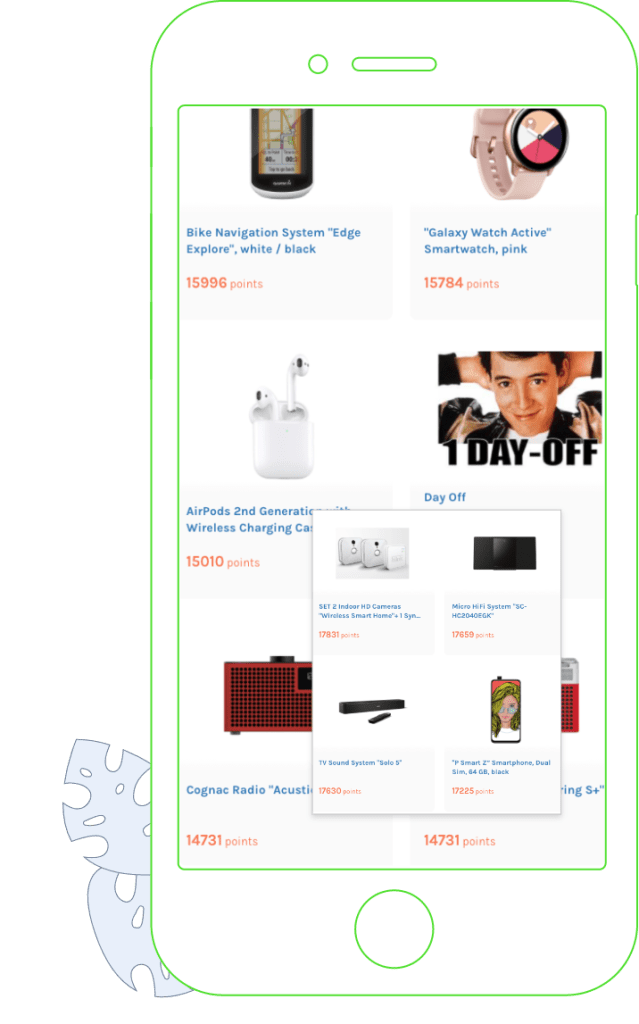Beat the Great Resignation and Join the Great Retention!
Lower your turnover rates by committing to an employee retention strategy that promotes the Employee Experience above all else.

What is Employee Retention?
The best teams stick together. This is true no matter where you find yourself, whether it’s in a book club, on a pro sports roster, or leading a company. In the world of business, we call teams sticking together, “employee retention”.
Employee retention is defined as an organization’s ability to prevent employee turnover. When employees start leaving a company, employee retention is lower and turnover rates are higher. It’s actually a common misconception, however, that turnover is the exact inverse of retention, despite the way it’s defined. Here are the differences between high turnover and low retention:
As recommended by SHRM, when measuring over a year, retention rate does not include new hires, while turnover rate does. It’s a small difference, but one that separates them mathematically – including new hires in your retention rate could lead the numbers to tell you that employee retention is higher than expected because your newest employees haven’t left the company. Retention is most effective when used to measure whether the more established members of your team are leaving.
Turnover often includes involuntary departures, like terminations and layoffs, while employee retention calculations often don’t. This varies on a case by case basis; if you feel like you’ve had a recent string of involuntary departures that would misrepresent retention rates, you could elect to exclude them from the calculation. On the other hand, a lost employee is a lost employee – you may want to keep all departures in the count to get a holistic view of your organization’s status.
Retention rates are usually analyzed over a long period of time (a year+) while turnover rates are more often called in for shorter time periods where departures are particularly rampant, like after a round of layoffs or in the midst of a struggling economy. If you want to know how many people just left, calculate the turnover rate. If you want to know how many people are staying in general, calculate employee retention.
HOW TO MEASURE YOUR EMPLOYEE RETENTION RATE
To calculate your company’s employee retention rate, it’s necessary to only count employees that were present at the start of the measurement period, as opposed to new hires made within the year. With that in mind, the employee retention formula is as follows:
Retention rate = # of individual employees who remained employed for the entire measurement period / # of employees at the start of the measurement period x 100
So, if you had 380 workers at the beginning of 2021, and 352 of them remained employed for the entire measurement period, you would divide 352 by 380 and then multiply it by 100 to get 92.6%. Don’t forget PEMDAS! If you divide 352 by (380×100) you’d get an employee retention rate of .009%, which might worry investors a bit.
28 employees leaving in a year seems high, but 92.6% is actually a great rate. The general rule for organizations is that a 90% employee retention rate is a good goal to strive for. It’s helpful to take your industry’s context into account when determining how urgent your company’s retention problem is – for instance, retail and franchise environments often see higher turnover as a result of the volatility of shorter average tenure. In any case, 90% is always a strong number, and the higher the number is, the better.
If you’re calculating turnover instead, due to the addition of new hires to the equation, you may want to aim for 15%, since the average employee turnover rate is 18%.
THE ADVANTAGES OF EMPLOYEE RETENTION
It might seem rather obvious that high employee retention is great for business, but there are a ton of different elements that you might not have considered. Our top five benefits for employee retention are:
Increased Revenue/Cost Reduction
Better Customer Experience
Increased Productivity
Improved Employee Experience/Satisfaction
Less Recruitment/Training
We put Increased Revenue/Cost Reduction on top for a big reason: per industry analyst Josh Bersin, the cost of replacing an employee can be 1.5x-2x their salary. That’s an enormous number that could be secretly chewing away at your overhead.
Bringing all these elements together also fosters a strong culture full of employee engagement, which in turn helps curb turnover itself. Boosting employee retention can single-handedly turn a company around, and if there’s ever a time to capitalize on it, it’s right now.
In 2021, 47 million workers left their jobs in a movement called The Great Resignation. It’s lasted into 2022 and has continued to wreak havoc among human resources and management teams everywhere. There are two different types of “resigners” taking part in this movement, and it’s helpful to distinguish between the two. The first type is the younger workers who want to turn away from the structure of capitalist employment and make money independently. They’re not as common as most people think, but they’re out there – and you probably won’t find them in your recruitment searches.
The main type of resigner aren’t people who are QUITTING work, but SWITCHING work. Millions of people are seeking better employment opportunities in talent destinations where they believe they’ll be engaged, inspired, and treated well. You can’t have high employee retention without building a culture that attracts talent, because the workplaces that don’t have that culture are the ones being abandoned.
The Great Resignation is hitting organizations that don’t prioritize the employee experience, but The Great Retention is found in organizations that do. How do you get your company to that point?
Here are some innovative employee retention strategies that will act as your main drivers of employee retention:
BUILDING A CULTURE OF RECOGNITION
Recognition is arguably the most important employee retention strategy, as according to Gallup, the #1 reason most people leave their jobs is because of a lack of recognition. This process can be pretty quick, too – if a worker notices they don’t feel appreciated after being hired, they’ll want out before they ever really wanted in.
There are actually two elements to developing a culture of recognition. There’s the type of recognition everyone thinks of primarily, which is the giving of rewards and bonuses to top performers. The other half, however, is just as vital: recognizing your employees as people.
Workers begin to care when they feel the company cares for them. Get to know your team members as individuals and give them an opportunity to share what they are passionate about outside of work. Learn about their hobbies and interests, and use this information when setting up your rewards & recognition program. As humans, we tend to be quicker to identify and address issues than acknowledge excellence, which is a vice great leadership needs to beat. Recognize excellence first! The right recognition program is a secret weapon for boosting your team’s loyalty and employee engagement.
Devote extra energy to creating systematic ways to praise members of your teams for good performance. When employees feel emotionally connected to their team and the goals
of the organization, they are more likely to go the extra mile. Set a dynamic culture of appreciation that makes recognition fun and meaningful, and celebrate exemplary behaviors publicly for your entire workforce to aspire to.
Some of our best ideas for employee engagement activities are –
Giving your employees a virtual high-five to recognize their contributions in real time
Celebrating top employees with an Employee of the Month Award
Posting a fun badge on the employee’s company profile highlighting recent accomplishments
Wishing your employees a happy birthday individually
Introducing a special award recognizing discretionary effort
Welcoming new hires to the team and introduce them to the company
Congratulating employees on reaching a professional milestone or recent promotion
Recognizing and encouraging innovation.
These public signs of appreciation will be some of your biggest drivers of employee retention and a culture of recognition.
BUILDING A SOCIAL WORKPLACE COMMUNITY
“Certainly remote engagement, I think the tool becomes that much more important when you have most of your employees dispersed… I find it difficult. I’m sure our managers find it difficult. We’re talking to them all the time about what we can do, to manage your employees, to monitor your employees, to engage your employees, I don’t know any other way to do it, other than technology.”
This was Focus Technology CFO Chris Caprio’s answer to a question we asked him in this interview about what’s top-of-mind for HR departments in 2022. The farther we go forward, the more true this answer is.
No matter what industry you work in, our ever-growing digital landscape is vital to day-to-day operations. This has become even more apparent following the COVID-19 pandemic, which pushed millions of workers all over the world to online-only capabilities. This cost organizations everywhere productivity and employee retention – but it didn’t have to.
Thanks in part to that same pandemic, the usage of HR software skyrocketed and is now shaping up to be the future of work. According to business analytics platform CB Insights, HR software is projected to become a $43 billion dollar industry by 2026. More and more top level organizations are adopting it every day, which is why it should be HR teams’ #1 priority. The question has shifted from “Should we invest in HR software?” to “Which software should we choose?” The software you should choose should be a social workplace community.
The concept of the social workplace community once meant that your work environment should be friendly, inclusive and inviting of discussion, especially since full-time employees spend the majority of their waking hours at work. Unfortunately, not everyone has that physical office environment nowadays, and the co-worker connections/relationships have been dramatically changed by the rise in remote/hybrid work environments.
It’s easy to lose the camaraderie of a workplace when the only time you see each other’s faces is over a Google Meet call. Bringing back the idea of the company break room, and “water cooler discussions” is more important than you might think. Re-creating that kind of social workplace community online can have a powerful, and immediate impact on your company culture and employee engagement.
What makes today’s most popular social networks so engaging? Constant online access; engaging, helpful, entertaining content; connections to people with similar interests; and most importantly, a fun user experience designed for the users themselves. Suppose that was available to every employee, via desktop or a mobile app, specifically for your workplace?
While many companies use collaboration applications like Slack or Microsoft Teams, messaging capabilities only scratch the surface of what a workplace community can be. Remote employees won’t get any info from someone’s name on a messaging thread… but what if that name is linked to a detailed employee profile?
Employee profiles are one of the best ways to create an online community for your organization’s people. Within an online community platform, team members can view each other’s profiles for essential information like skills, experience, goals, contact information, and anything else they might want to share about themselves.
Seeing these profiles all in one place (perhaps even on an org chart) gives team members on-site and remote, an excellent picture of the company structure and the people within it. Its easy online accessibility makes this especially useful for hybrid workforces who might be experiencing a disconnect between the two halves of their team.
It’s also an excellent solution for frontline teams, such as hospital or food service workers, whose days are too busy for the kind of togetherness that you would hope to develop at work. An online community – especially one they can access from their phone – can help them stay in touch with their employer, manager and coworkers whenever they have the opportunity.
What makes social workplace community software such a great driver of employee retention is the fact that it’s specifically crafted to appeal to the employee just as much as – or more than- management. Too many HR platforms are designed to make the management team’s life easier by forwarding assignments more quickly, while these platforms are instead made for your people.
Picture a social media platform that doesn’t distract from work, but enhances your work. A system like that will engage your company’s team and keep them productive regardless of where they operate from. A social workplace community reconnects all of your employees and lets collaboration be both easy and – dare we say it – a little more fun.
BUILDING THE RIGHT CULTURE
A great culture creates quantifiable business success. Per Forbes, companies whose workers identified their organizational culture as “strong” saw 4x the revenue growth than companies on the opposite end of the spectrum. But… how DO you boost culture?
Well, culture is perhaps the most intangible aspect of an organization’s success. It can’t be captured on a spreadsheet or reported on a graph, it’s felt among employees and their feelings about their jobs. Companies with the best employee retention programs develop a stronger culture as a byproduct of focusing on their people. Therefore, you should start by satisfying your team!
The steps above are some of the most important types of employee retention strategies; adopting a social workplace community, committing to recognition, and making smart hybrid work decisions all represent long strides in the direction of a healthy culture. However, there are still more deliberate steps you can take.
DEIBA (Diversity, Equity, Inclusion, Belonging, Accessibility) is one of the most important. Diversity isn’t just about hiring minority groups, it’s about creating an environment of employees from all backgrounds with all kinds of points of view that have equal opportunity to succeed. There’s much more to discuss about DEIBA than can fit here (check out our E-book for more!), but we can certainly tell you why it’s crucial.
Companies in the top diversity quartile are 25 percent more likely to have above-average profits, while companies in the fourth quartile for both gender and ethnic diversity are 27 percent more likely to underperform on profitability. Companies with DEIBA programs also tend to see improved organizational health, global competitive advantage, increased productivity, better online reviews, easier hiring and employee retention, and a positive public image. Great DEIBA practices can lead to a complete and positive culture overhaul.
Per McLean & Co, 62% of organizations have added DEIBA as part of human resources’ role, which is trending upwards. Managers abide by DEIBA, while HR runs it behind the scenes. You just can’t miss out on it.
Another element that’s a little less worker-centric is creating a meaningful mission/vision statement for your organization. A mission statement tells people three things: why the business exists, what makes it different, and what its people stand for. When it resonates strongly with those who read it, it not only helps your company’s reputation, but acts as a positive influence for your employees.
Finally, focus on an element of culture that’s often overlooked by creating a culture of education. No team member wants to feel like their development has stagnated while they’ve been at a position, and yet, organizations rarely try to teach their employees anything new. They haven’t learned industry best practices since they were onboarded years ago – and oftentimes, those practices have changed.
Training, onboarding and educating should be the same across every branch in order to align teams and keep company standards high. However, as you probably know, that’s rarely the case. That’s why adopting a Learning Management System is an essential element of employee retention for companies that want to keep that consistency across all locations.
With standardized training/onboarding and recurring educational material that updates automatically, you can feel assured that all your frontline workers are being introduced to their positions in the same way. They prefer the LMS style overall – 80% of deskless workers prefer short, spaced-out lessons to one-time on-site training events.
COMMUNICATION DONE RIGHT
Communication between the management team and the workforce is absolutely vital to employee retention at any organization. What becomes an obstacle, however, is not the company’s capability to communicate between themselves – it’s their commitment to it.
Too often you’ll find a company that believes scheduling meetings and sending out daily newsletters can substitute for holistic engagement. While these are great means of connection themselves, you cannot rely on them to keep your staff fully informed and connected with their management.
Business communication is defined by the interaction between two people to reach a common goal, rather than one person speaking in the direction of another. Your employees should be welcome to speak back just as easily, especially if it helps them more thoroughly understand their role.
In most cases, meetings and emails just won’t cut it; they’re too one sided and don’t provide the engagement employees need to feel satisfied and informed. Between relationship-building, task delegation, and information sharing, efficient communication has to be present for a workforce to be engaged and productive.
As companies grow, the ties that bind colleagues can stretch and weaken with the size of their workforce, leading to disconnections between departments. Unless you’re a company large enough for a dedicated internal communications team, it’s likely to become HR’s responsibility to take charge.
Communicate news and events wherever your team spends the most time – and hey, that could be your HR software or intranet. The platform may have a dedicated area for bulletin news, whether that info is an upcoming event, sales win, or even a colleague’s birthday.
Communication becomes even more pivotal for hybrid and remote workforces, since it dictates how they operate, what they prioritize and how fast they get things done. Capitalize on digital tools like Slack, Microsoft Teams, Discord and other messaging platforms while making sure everything’s centralized in one place to ensure your teams aren’t checking multiple inboxes. Plus, great news – some HR systems are integrated with Slack and Microsoft Teams, to truly close the loop on employee engagement.
There’s another type of communication that’s distinct from simple information sharing, and that’s feedback. If feedback within your workplace isn’t consistent and clear, it can cause misalignment, hurt productivity, and yes, hurt employee retention. Communication from employee to management is the subject here: there’s a 16% decrease in retention rates for workers who aren’t comfortable giving upwards feedback.
That ability to give feedback itself, while important, isn’t the sole factor that can defeat turnover on its own. It’s the content of what your workers are telling you. Your team’s feedback, when honest, can key you into everything that needs fixing or reassessing within your workplace. Perhaps your employees have an issue with the flexibility of their positions & work-life balance, or they feel that your performance review method isn’t as helpful as it could be. Learning about the issues your team cares about is by far the best way to tackle them, and you won’t hear about them without curating a culture of feedback.
AN INVESTMENT THAT ALWAYS PAYS OFF
No matter how good your product is, or how solid your business strategy appears to be, you need a great team to design the product, continuously develop it, efficiently sell it, and deliver exceptional customer service for repeat business.
Your team is an indisputable driver of your company’s long-term success and your true competitive advantage. Your people will determine how far you go, how fast you grow, and how successful you become. They will make the difference between surviving and thriving.
Invest in your people. As employee engagement begins to grow and become part of the heartbeat of your company, the positive impact of an employee retention plan template will be significant.
If your organization is currently exploring comprehensive employee retention software that integrates seamlessly with other HR tools, improves company culture, offers structured recognition programs, and helps your teams stay connected, take a look at HelloTeam. It just might be the last such platform you’ll need to look at.
For even more retention tips, check out our article here – as well as our whole library of articles here. If you want to see how HelloTeam’s platform can help you attain a high level of employee engagement, schedule a demo!
RETENTION RESOURCES
10 HR Strategies for the Retention…
How DEIBA Can Improve Company…
How to Create an Employee Communication…
Effective HR Strategies for A Competitive…
Getting Started with Stay Interviews
7 Employee Retention Budgeting Tips From…
The Employee Experience And…
How Employee Incentive Programs…
7 Reasons Your Workplace Should…
Employee Retention Strategies for HR
Innovative Employee Retention Strategies
How to Boost Employee Retention Through…
What are 5 Employee Retention Strategies?
Employee Retention Strategies PDF
Average Turnover Rates by Industry
Implementing an Employee Retention Policy
Employee Retention Strategies 2022: People…
Employee Retention Strategies 2022: Performance…
Employee Retention Platform: Seven Requirements
What is Employee Retention and Why is it…
Average Turnover Rate in 2022
Employee Retention Strategies – Remote Games
Onboarding to Boost Retention
Retention Platform Buyer’s Guide
Survey Questions to Boost Retention
Employee Retention Statistics 2022
Creative Ways to Retain Employees
The Ultimate Guide to Learning Management Systems
The Great Resignation is the biggest challenge to modern workforces, and the solution is boosting employee retention through engagement and a strong culture. Retaining workers requires a solution built for every employee – when your Retention solution benefits management instead, your teams become disengaged.
The importance of employee retention cannot be understated, and that’s why HelloTeam has created the first (and only) Employee Retention Platform to deliver a critical solution embraced by a massive, underserved market: individual employees.

“Utilizing HelloTeam, we’ve been able to gain insight on our turnover and retention rates, and it’s helped us come up with strategic plans to help with those rates.”
-G2 Reviewer
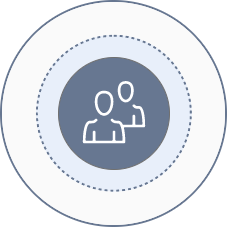
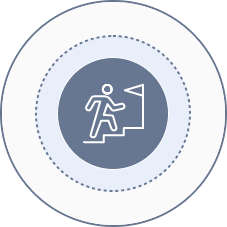
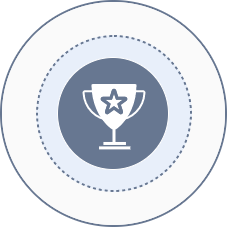
communication
culture
celebration
Communication is the driving force behind progress within your company.
A healthy culture is vital to employee retention – ⅓ of early quitters cite a bad culture as the reason.
When employees are consistently recognized for their accomplishments, they’re 2.7x more likely to be highly engaged. Engagement leads directly to retention.

Communication
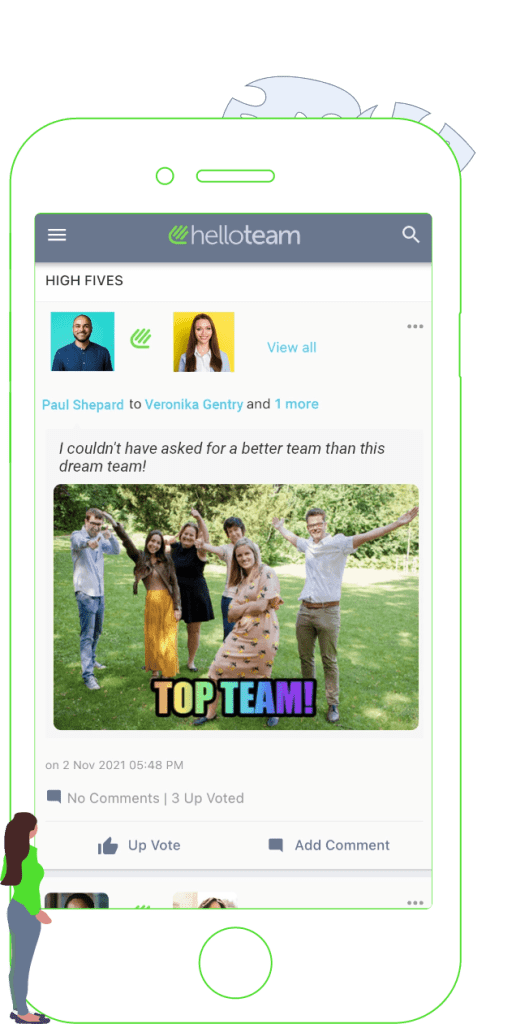
Chat with Us
The HelloTeam platform is integrated with Slack and Microsoft Teams, bringing the retention features of our system right into the messaging features of your system.
Feedback With Us
Set up recurring one-on-one meetings that let you deliver feedback, updates, or just casual chit-chat with your staff.
Reviews with us
Do the same thing with Performance Reviews and let the HelloTeam platform facilitate self evaluations and 360° feedback.
News with us
Use our News and Events section to update the team on news bulletins, upcoming events, and accomplishments from around the organization.
Culture
A Culture of Recognition
Per Gallup, the #1 reason people leave their jobs is a lack of recognition – use our High Fives and Badges tools to boost employee retention.
A Culture of collaboration
Use our Skills Matching features to arrange the best teams to tackle tasks tailored to their talents.
A Culture of hybrid work
Bring your remote teams to the same table as your on-site teams with our online social community platform.
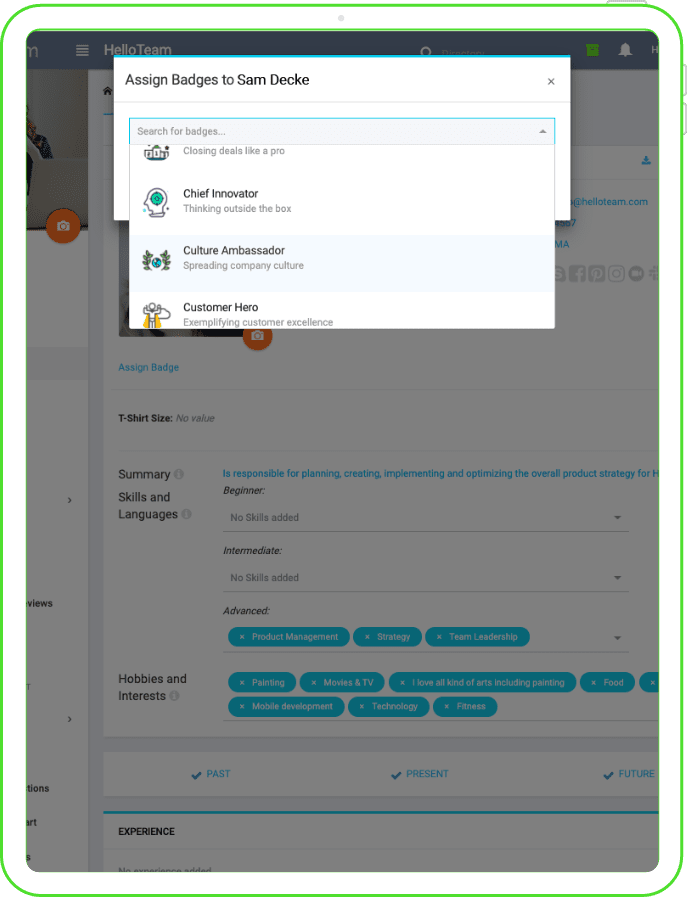
Celebration
Attract and Retain
Millions are leaving their jobs due to a lack of recognition and are looking to switch to a company that promotes it. Celebrating your team for their accomplishments and tenure – and even their birthdays – will do just that.
High Fives and Badges
Give High Fives and badges to teammates for jobs well done! Drive motivation and engagement with crowdsourced peer recognition.
Rewards and prizes
With HelloTeam Rewards, you can accrue rewards points based on High Fives you receive. Redeem them for prizes, events and more!
